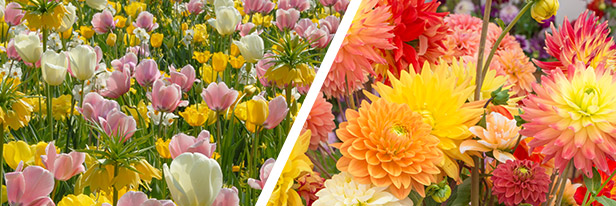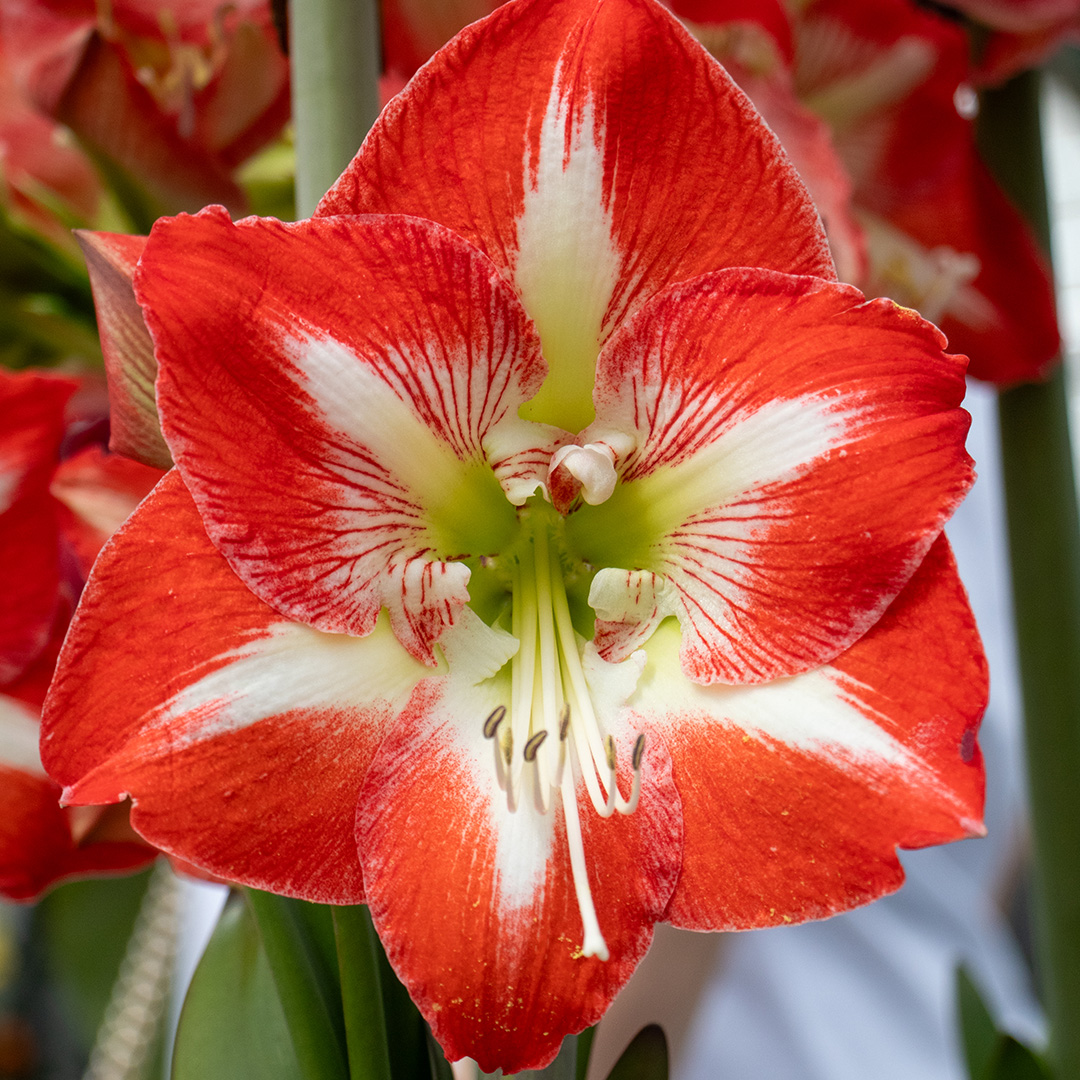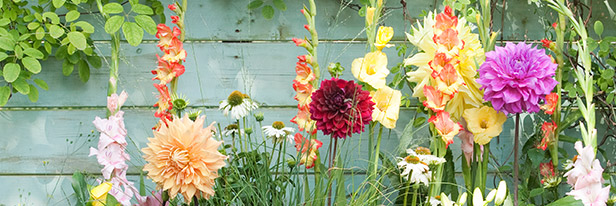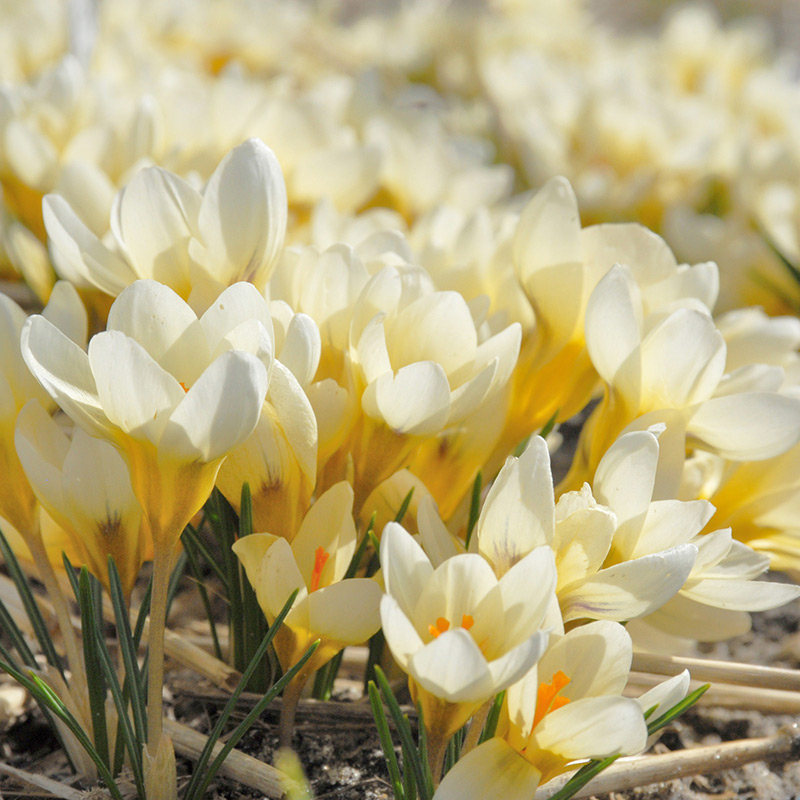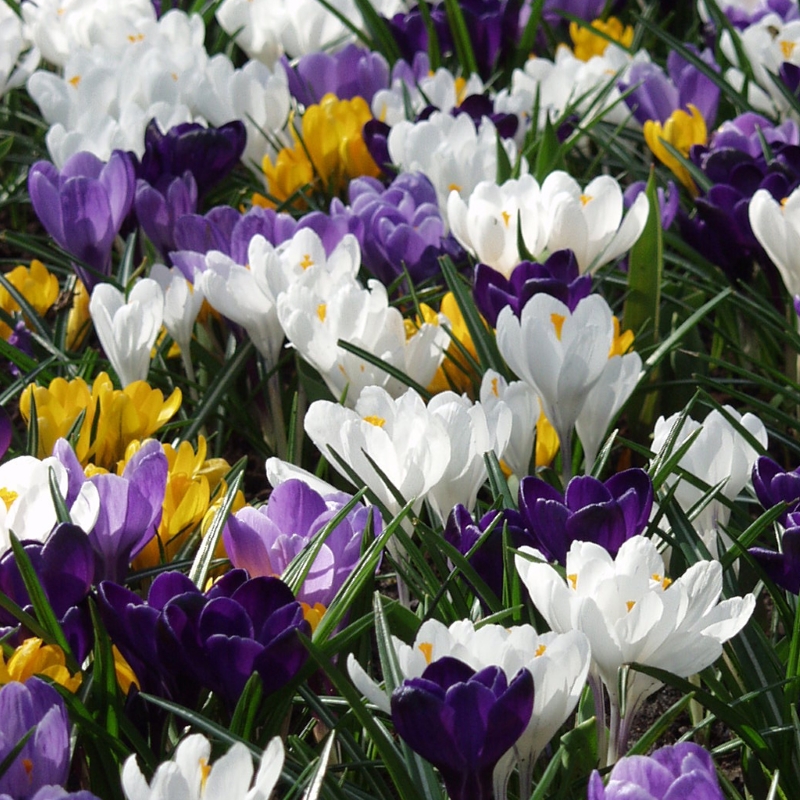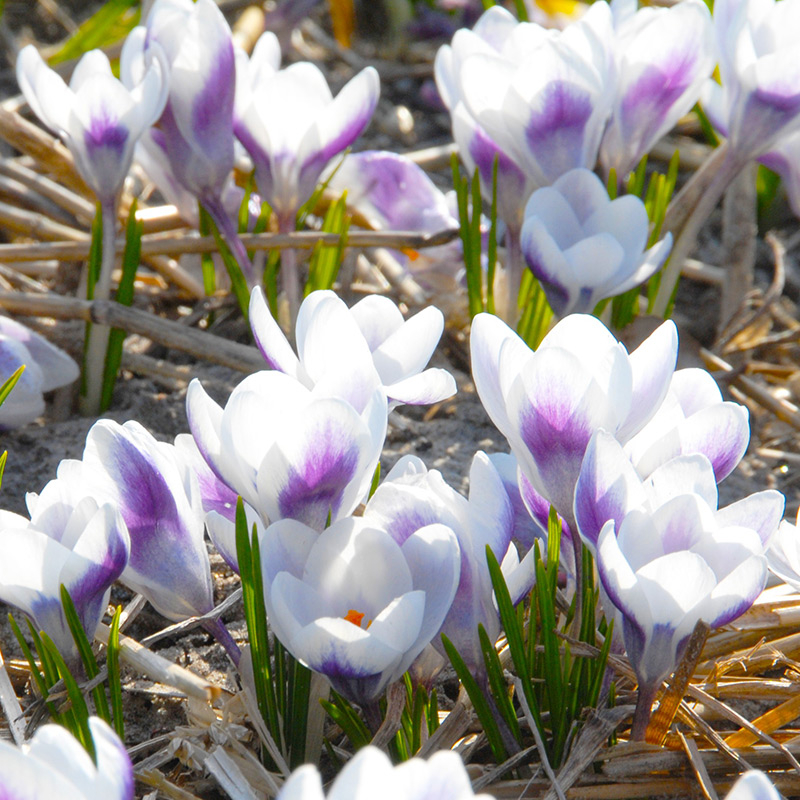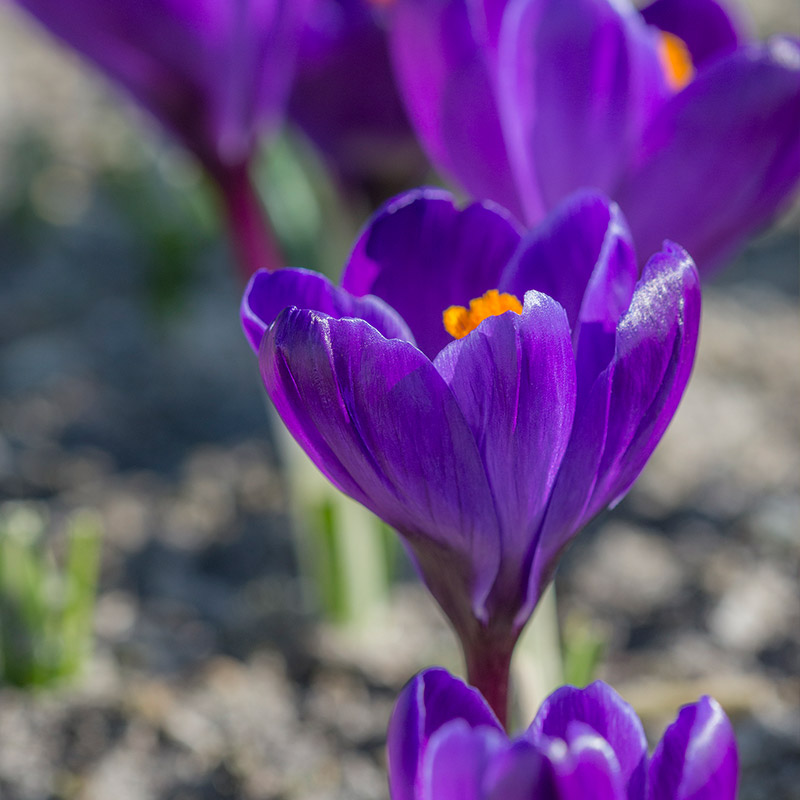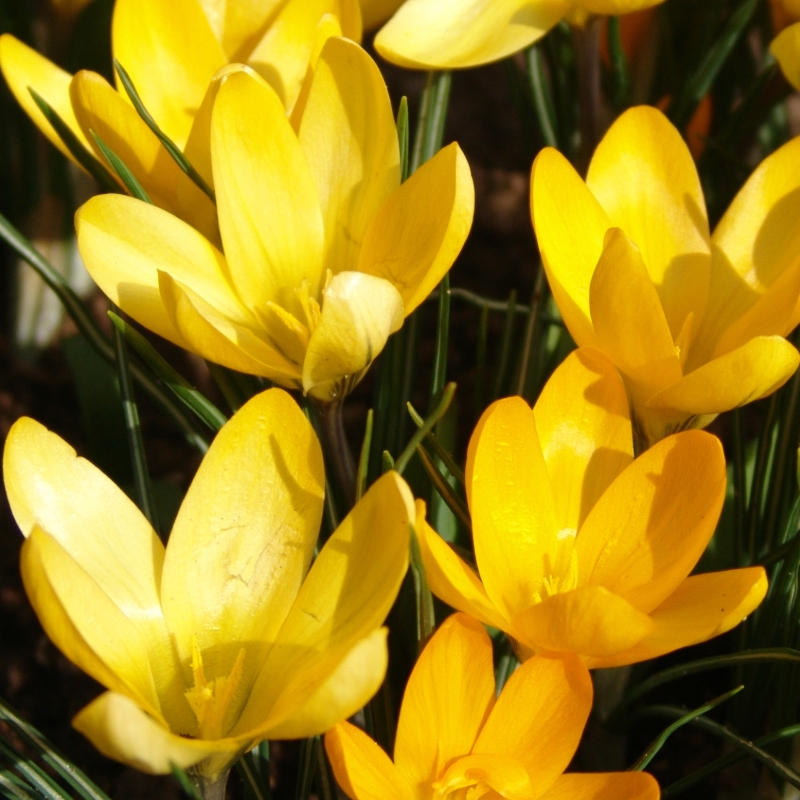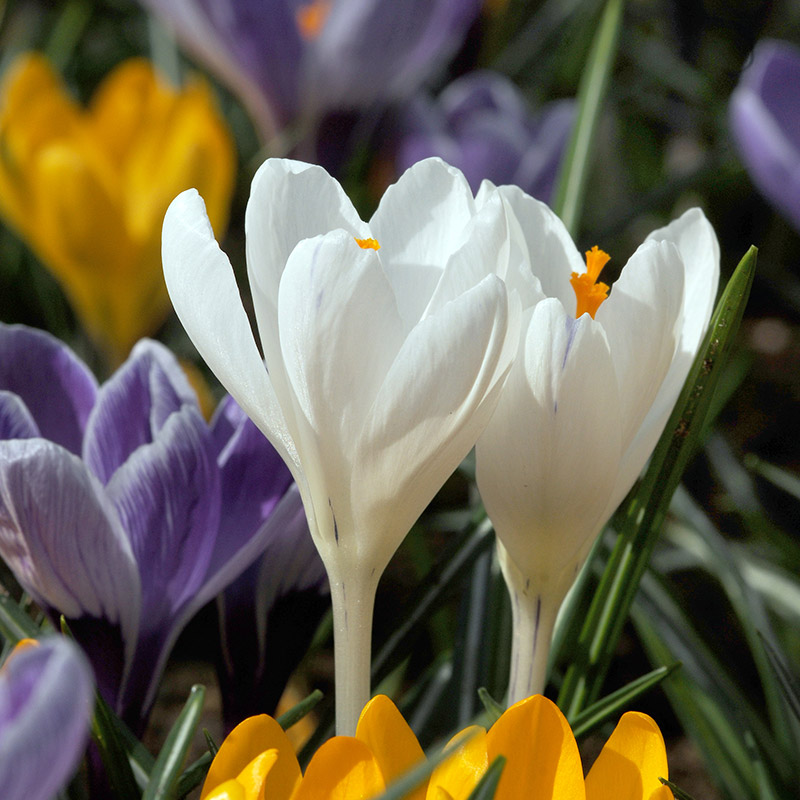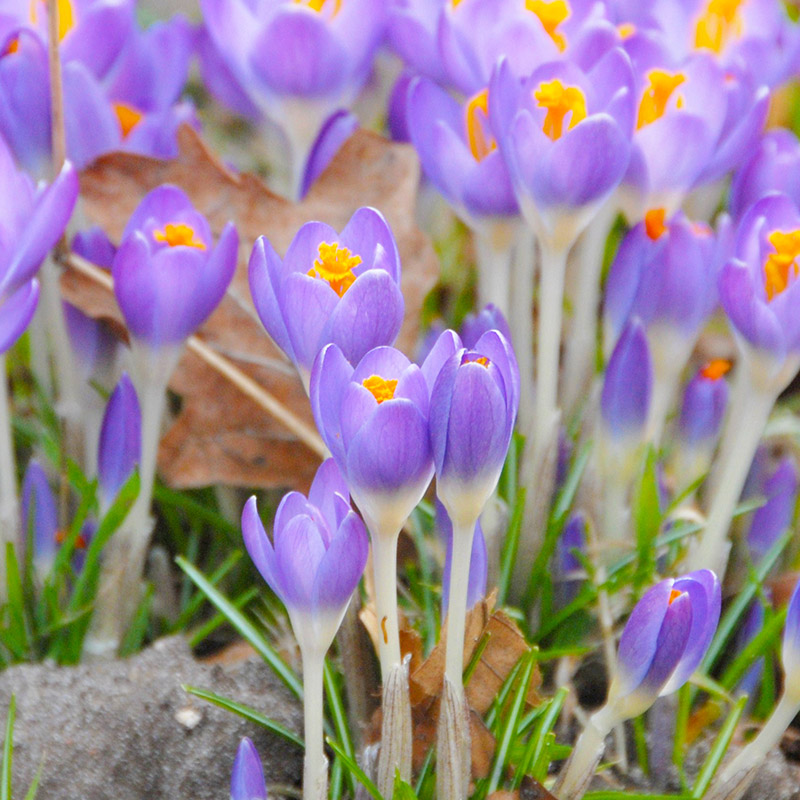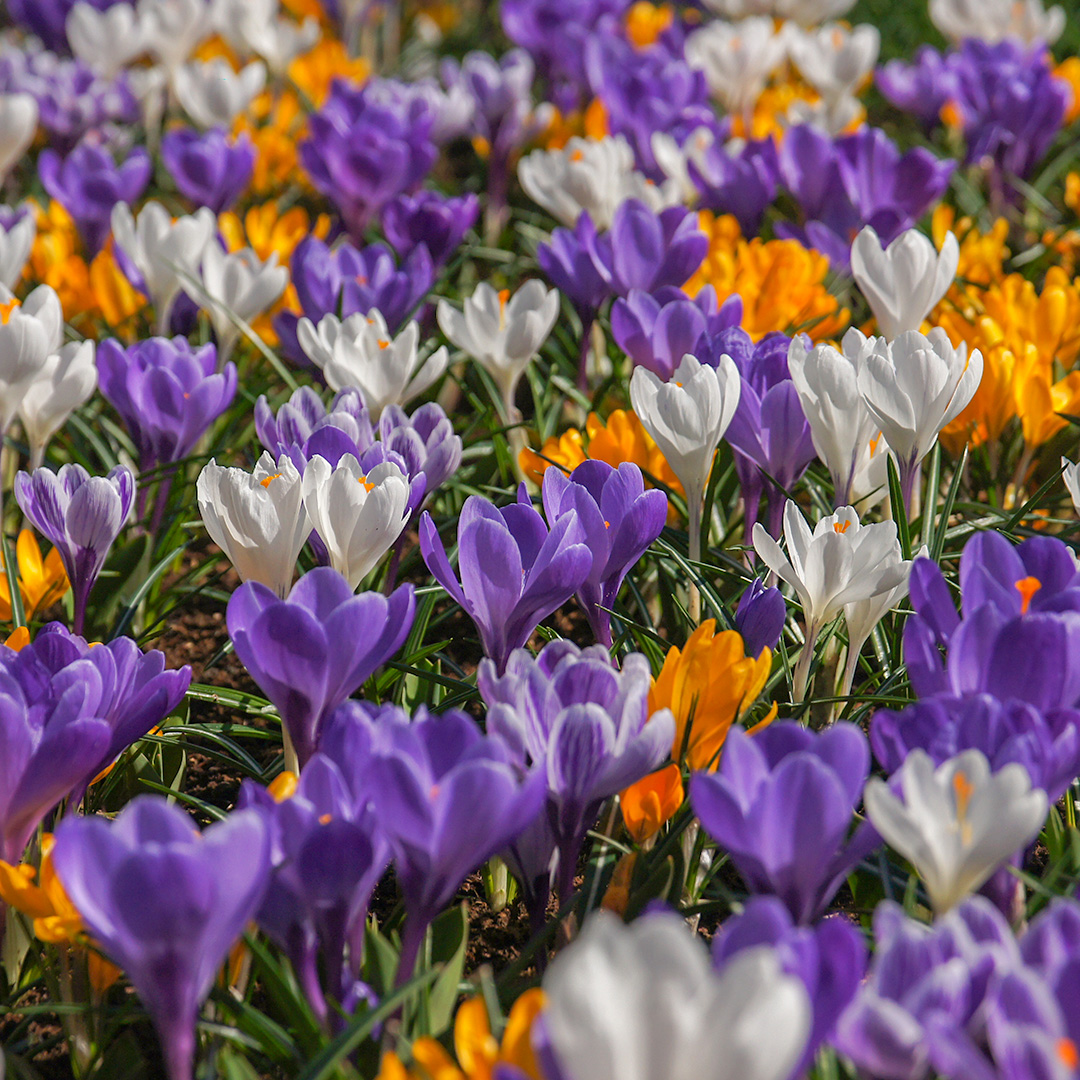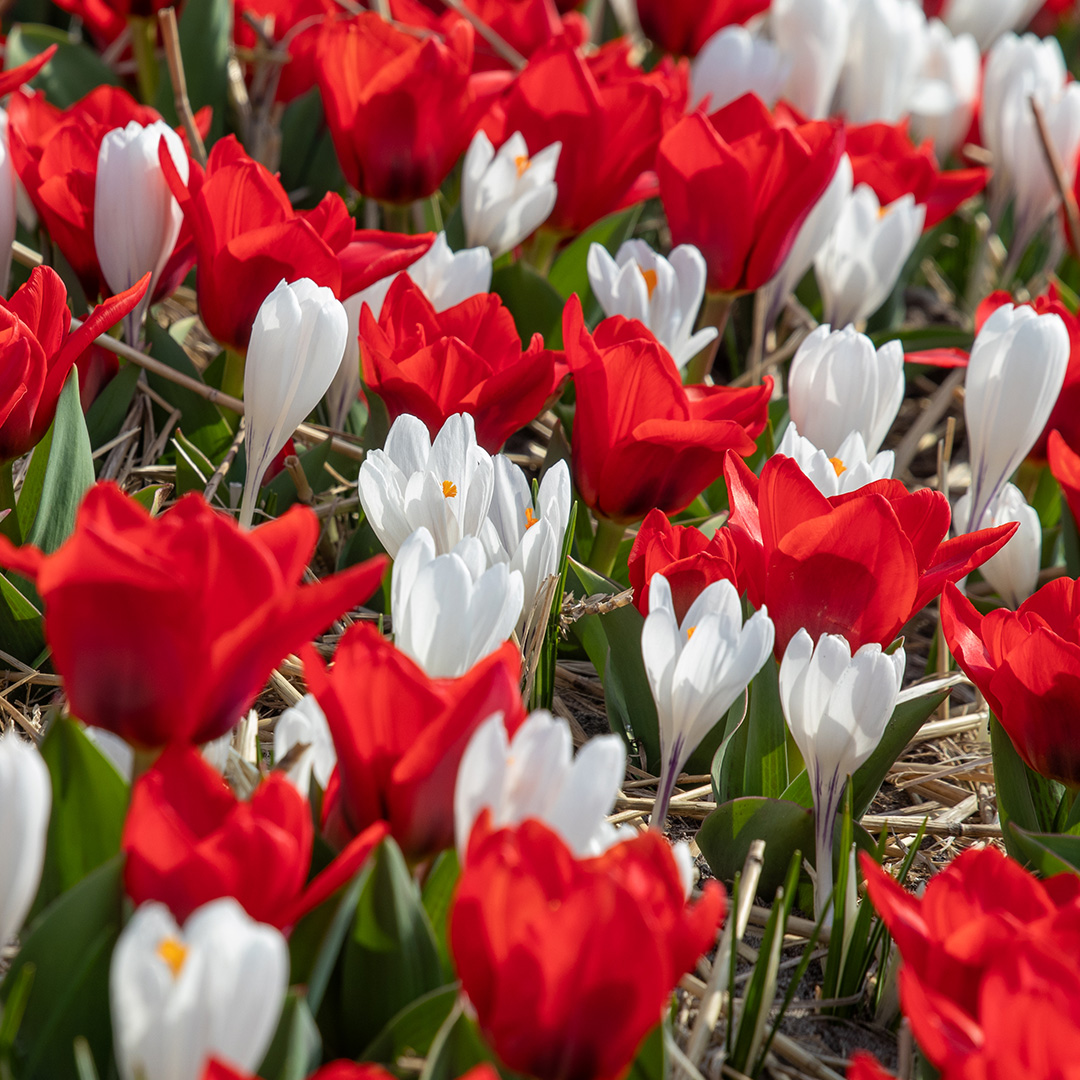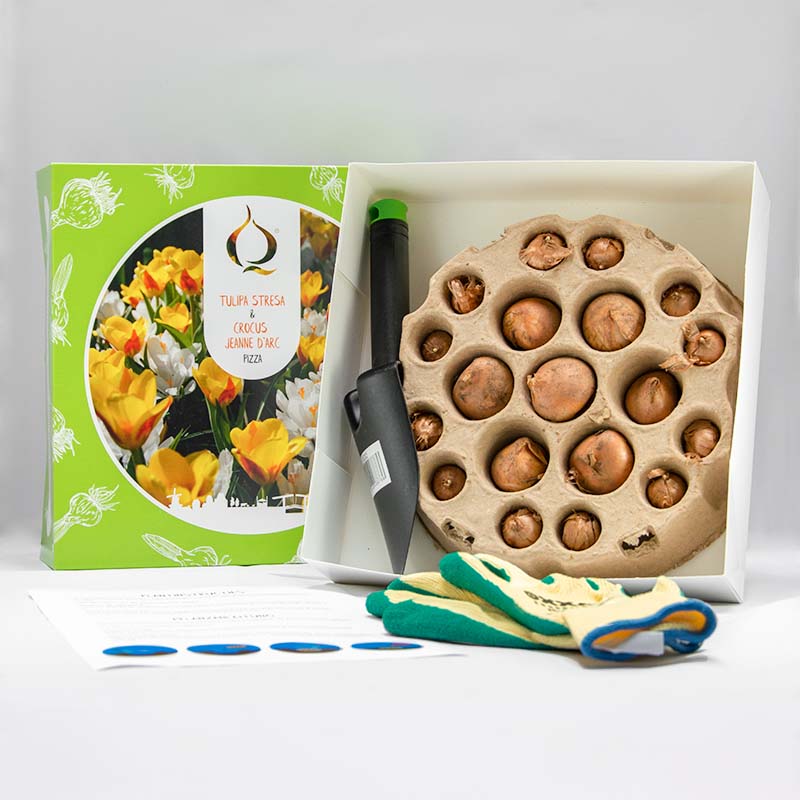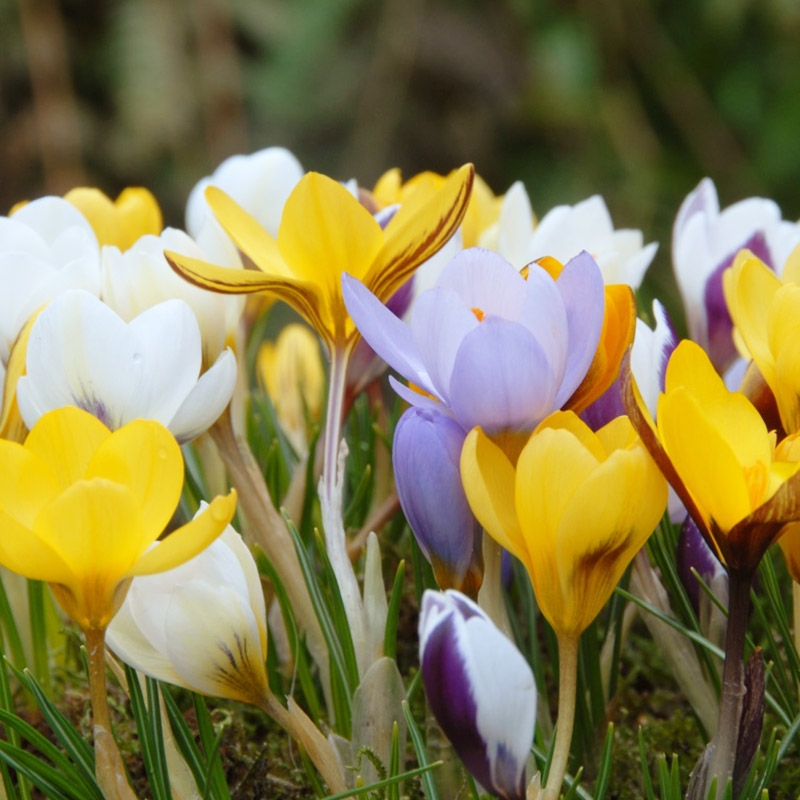
How to plant crocuses?
Autumn is planting time! This also applies to crocus bulbs. Crocuses are among the first bulbs to show their flowers in spring. We will gladly explain to you how exactly you should plant crocuses and what to look out for!
When should crocus bulbs be planted?
Spring-flowering crocuses bloom almost at the same time as snowdrops and create a beautiful garden scene in early spring. Depending on the variety, the bulb of the crocus flowers between February, March and April. Crocuses should be planted in autumn. The bulbs should be placed in the ground before the first frost, with the point facing upwards. Crocuses prefer a sunny location in the garden.
Planting crocuses in beds and tubs
Crocuses look most beautiful in the garden if you plant many bulbs together. As crocuses usually don't grow taller than 15cm, they make a particularly big impression when planted in groups. Do not plant them in a straight line, but randomly. This creates a playful effect. Just take a few bulbs in your hand and throw them into the planting hole and plant them where they fell. For a real colour spectacle, mix different crocus varieties and colours. The best planting depth for crocuses is 1,5 to 2,3 inch below the soil surface. Keep the soil moist in autumn, but make sure that the bulbs do not get their feet wet. Waterlogging can cause the bulbs to rot. If there is still a severe frost in February, cover the crocuses to prevent damage. Crocuses are very suitable for planting in pots so that they can also bloom in your home. However, it is important that you first place the freshly planted crocuses in a very cool place or plant them in the garden first to bring them indoors after the winter. This is because the bulbs of crocuses need the cold of winter to develop their beautiful flowers. Crocuses are also a great addition to a flower bulb lasagne. Combine, for exabple, crocus bulbs with daffodils and tulips from different height groups in one pot. This way you will have flowering pot plants for months. This is the longest way to enjoy the flowering crocuses.
Planting crocus bulbs in the lawn
Crocus bulbs, like daffodils, can also be planted in the lawn. Before planting, you should first mow the lawn. This makes it easier to work. Cut out a piece of lawn for planting. Spread the bulbs over the soil with the point facing upwards. Keep in mind that crocuses run wild and multiply. So plant the bulbs a little distance apart (about 2,3 - 3,1 inch) so that they still have enough space to multiply over the years. Then put the grass back on top of the crocus bulbs and water the lawn afterwards so that the grass can grow well again.
The only thing you should be patient about is mowing the lawn for the first time in the spring for the sake of the crocuses. As long as the leaves of the early bloomers are still green, you should not mow the lawn. This is because the bulbs have not yet finished reproducing. Wait until the leaves have withered before mowing.
Nectar when other early bloomers are still sleeping
In early spring, bees, butterflies and other insects usually have a hard time finding enough nectar. Due to its early flowering and wide-open blossoms, the crocus is particularly desirable and an important food source for insects.
Combine different crocus species
Crocuses are a colourful eye-catcher in any bed, container or lawn. If you plant crocuses together in groups and in different species, the result is a real colour spectacle. You can buy ready-made crocus mixtures from us to create a great base in autumn for great flowers in spring. Because of the similar flowering time, a combination of crocus and snowdrop or winter aconite is always particularly popular and harmonious. Let your imagination run wild when planting!
Crocus care
When you plant crocuses, you hardly need to worry about anything afterwards. Only the crocus, like many other bulb flowers, does not like waterlogging. When planting in a pot, make sure that water can drain off easily. Crocus plants do not need fertiliser, nor do they make great demands on the quality of the soil. You should only take care not to pick off the wilted leaves, but wait until they have wilted. This is because the withered leaves provide the necessary nutrients for the bulb to reproduce. In this way, you can always enjoy new flowers in spring.


